Mongolia was one of the countries that I was fascinated to travel to, but didn’t know much about. In my imagination, I had pictured a vast barren desert with nomadic culture. Though some of that was true, I discovered a lot more in Mongolia during my one-week visit. Here are some of the most beautiful things that took me by surprise…
Lush Green Landscapes – Yes there is a big desert covering a big chunk of the country, but there are also forests with trees, and lush grasslands. The rainy summer season and the rivers help irrigate the area. In winter, most of the country is covered in snow. Note: Ulaanbaatar (UB) is the coldest capital in the world, having a January average of -20 °C (minimum reaching -45 °C).
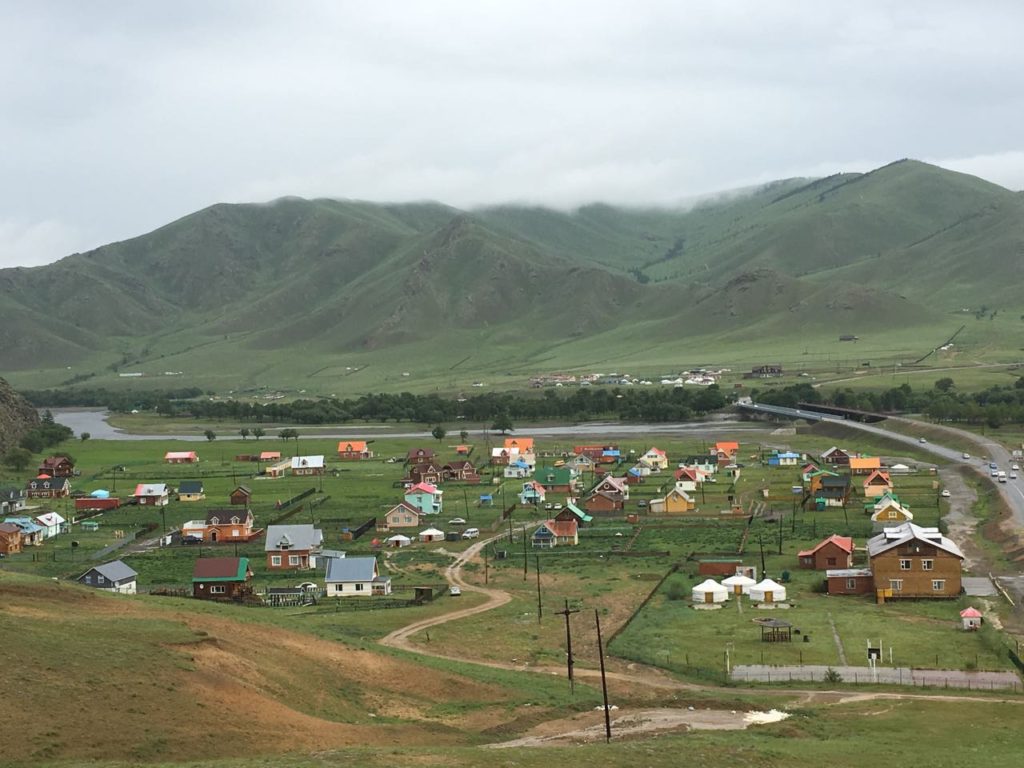
Village in Terelj National Park/ Photo by Amanda Villa-Lobos
Free Roaming Animals – During my long drives through the countryside, I saw hundreds of yaks, sheep, goat, cows, horses and camels roaming around on their own. Because Mongolia still preserves it’s nomadic culture, many families keep a herd of animals, and keep moving to different locations for better grazing access. Note: The Mongolian diet is rich in meat and animal products (such as milk, cheese, yogurt) as this is the only source of food in many areas.

Two humped camels/ Photo by Amanda Villa-Lobos
Cute Kids – The children in Mongolia have a blend of Chinese, Persian and Russian looks. They are chubby and adorable! The kids who grow up in the countryside learn survival skills at an early age. They ride horses, milk animals, collect firewood and build gers.
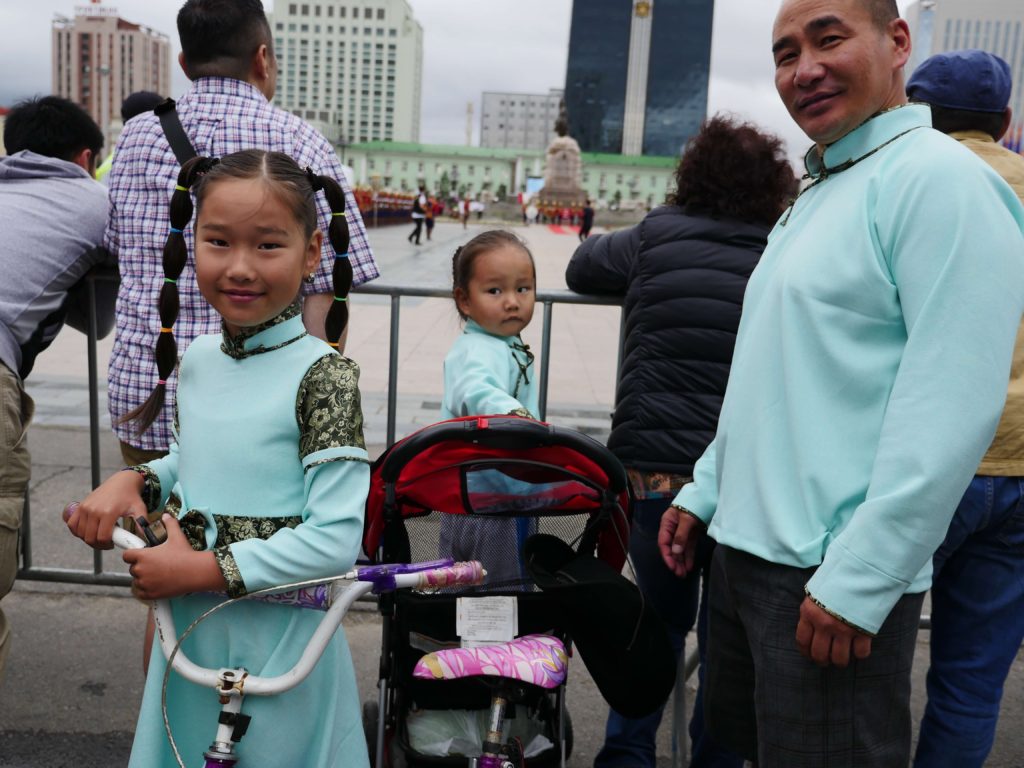
Family at a parade in UB/ Photo by Amanda Villa-Lobos
Sleeping in Gers – While I am not a big fan of camping, I enjoyed staying at the luxury ger camps – Dream Terelj Lodge and Dream Gobi Lodge. Can you imagine waking up to this view? Here I was able to experience a nomadic home which is constructed using minimum equipment (felt, poles, lattice, cloth, ties). There is a door and an opening on the roof which is uncovered to let the light in. My ger also came with a fan, heater, lights and a private attached bath. Did you know? It takes about 2 hours for a family to construct a ger and only half hour to dissemble it.
Traditional Costumes – The Mongolian national costume is a robelike garment called a deel. It is worn with a thin silk sash several yards long tightly wound around the waist. Attached to the sash are essential objects such as the eating set, tinder pouch, snuff bottle, and tobacco and pipe pouches. Female attires are adorned with ornaments and jewelry. There are different kinds of hats and boots, depending on which part of the country they belong to. Travel Tip: There is a costume parade at the opening ceremony day before the annual Naadam festival in July. This is a good opportunity to see families from all over the country dressed in the traditional clothes. Tourists are encouraged to dress up too!
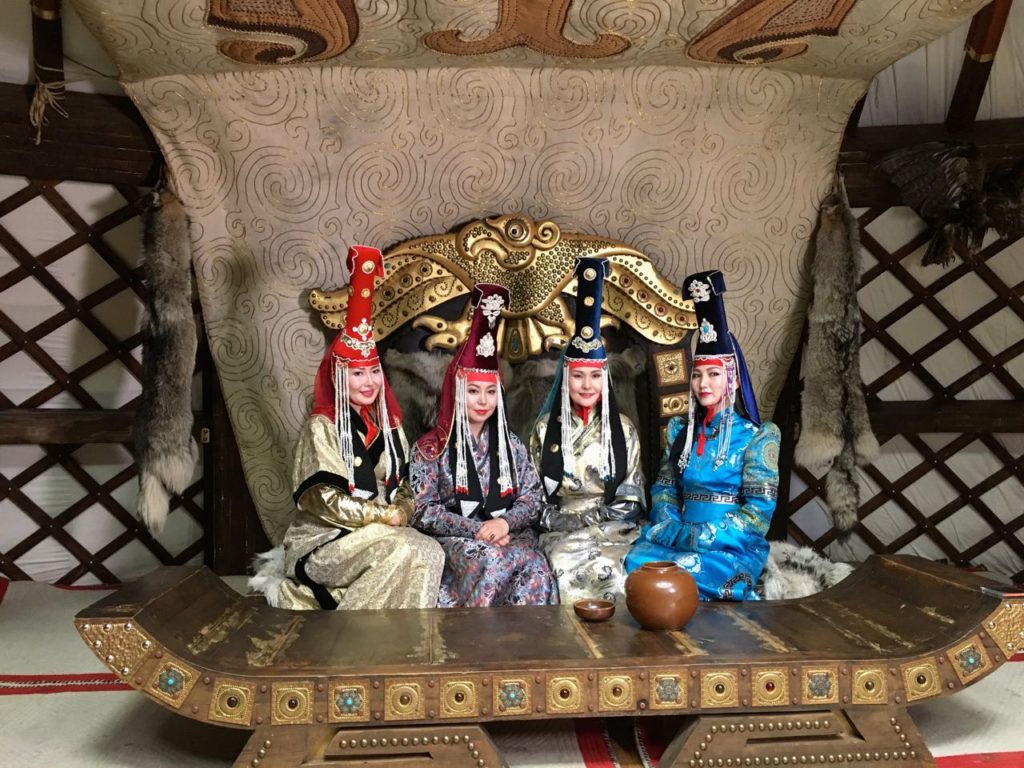
Mongolian women dressed in traditional costumes/ Photo by Sucheta Rawal
Winding Back The Clock – Mongolia’s ancient culture is well persevered at the 13th Century National Park (located 2 hours outside UB). Here visitors can eat traditional food, visit old gers where Shamans practiced religion and Chinggis Khaan’s teacher lived, learn to write in Mongolian script, and play a horse headed fiddle.
Vastness of the Gobi Desert – The Gobi desert is the coldest desert in the world and home to many important cities along the Silk Road. It is said to be high energy place, covered with fossils as old as 100,000 years. Bayanzag aka Flaming Cliffs is a location where the highest concentration of dinosaur bones and eggs have been found. Travel Tip: Travel through the vast region of Gobi can take several days as there are no roads or signs; there are few flights which can be affected by weather conditions; the region shuts down in winters; and there are not many places to stop and ask for directions!
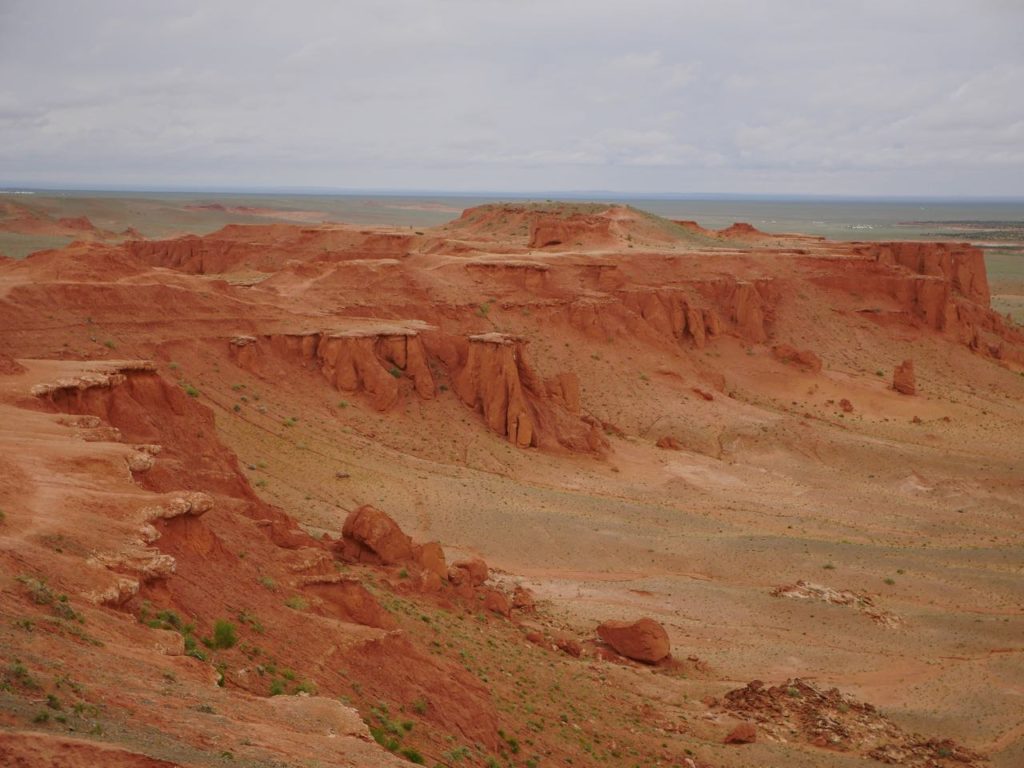
Flaming Cliffs/ Photo by Amanda Villa-Lobos
Warm Hospitality – My hosts for this trip were Voyage Unique Mongolie. Khishigjargal and her husband, Dorjpurev took us around the entire time, giving us a very personal experience showing us their country. It felt like we were on a holiday with the family. We sang songs and ate candy during long drives, and stopped to have picnics in breathtaking sceneries. No matter where we went, we experienced the same level of polite and warm hospitality. Even when language was a challenge, the employees at hotels and restaurants would make a sincere effort to address our needs the best they could.
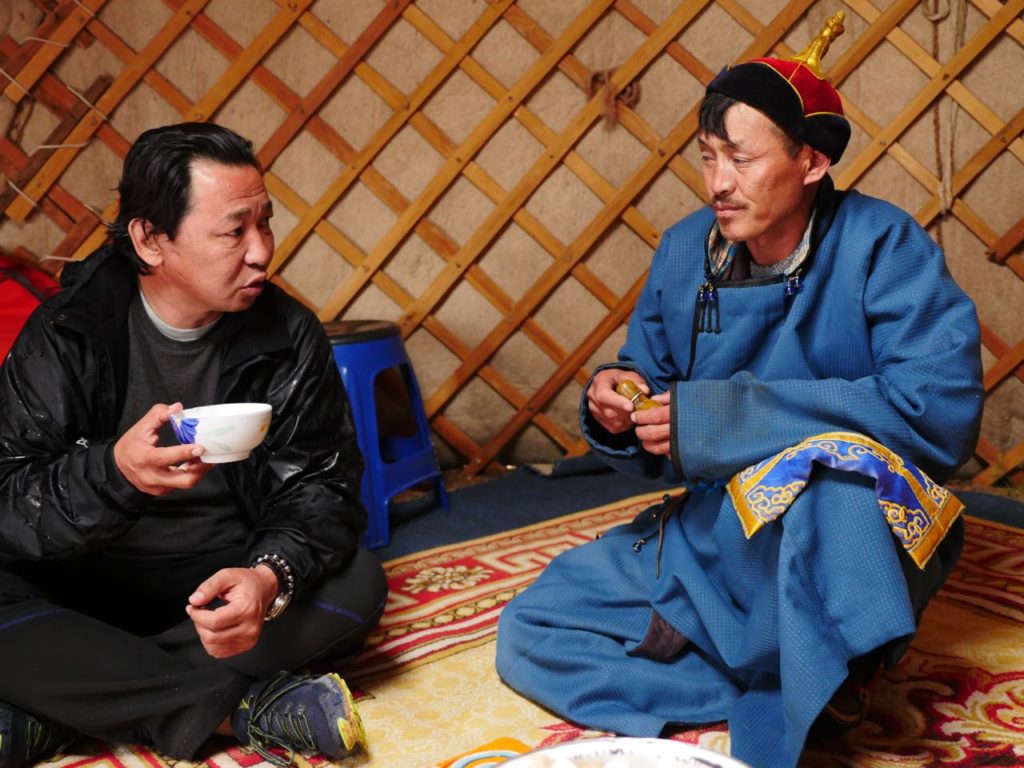
Drinking tea at a nomad’s home/ Photo by Amanda Villa-Lobos
Modern Mongolian Music and Dance – The traditional Mongolian dance is bielgee, which is performed by both men and women. Rhythmic movements, fast beats and expressive gestures that represent daily life, are simply captivating. Mongolian musicians are especially talented using deep throat singing, and several local instruments, such as the horse head fiddle, drum and gong. These days, techno and rap are being integrated, creating fun modern tunes. Travel Tip: Watch a traditional concert by the band Tumen Ekh ensemble at National Recreation Center in UB.
Naadam Festival – The annual festival celebrates the ancient sports of Mongolia – horseback riding, archery and wrestling. The entire country goes on holiday while families dress up, go for picnics and cheer the contestants. The main competitions take place at the stadium in UB, but events are also spread out. One of the most fascinating aspects of the festival is to see 5-12 year old kids race horses for up to 10 kilometers. They ride solo, at very high speeds, through the countryside! The winner receives a medal, money and bragging rights.
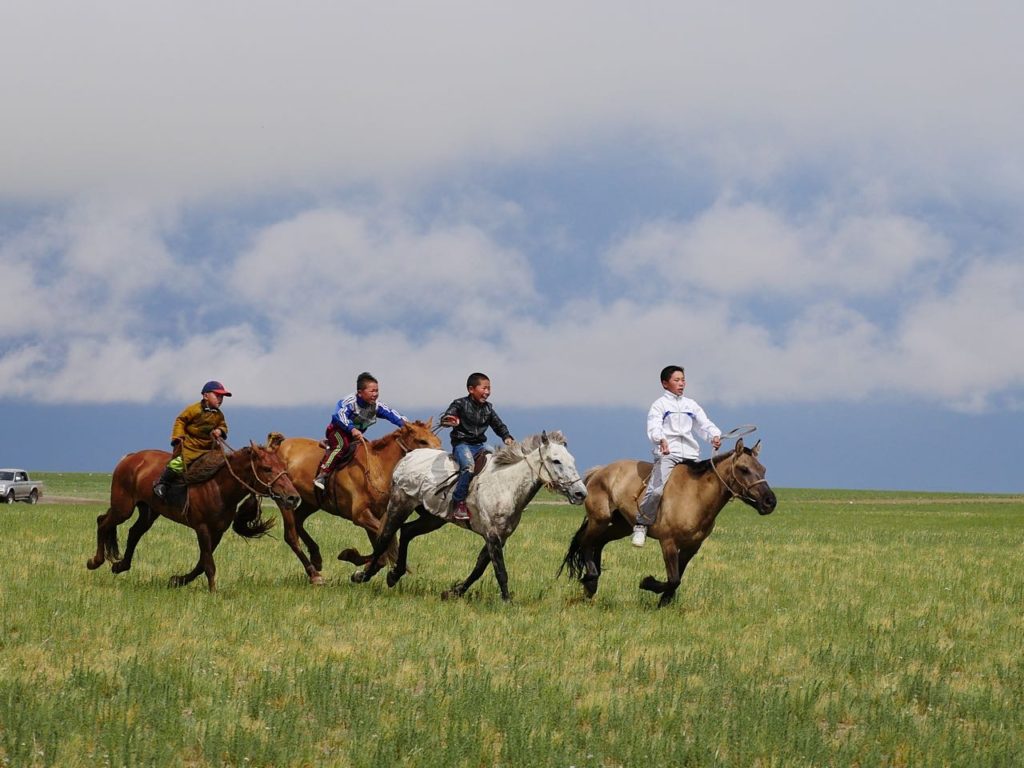
Horseback racing at Naadam festival/ Photo by Amanda Villa-Lobos